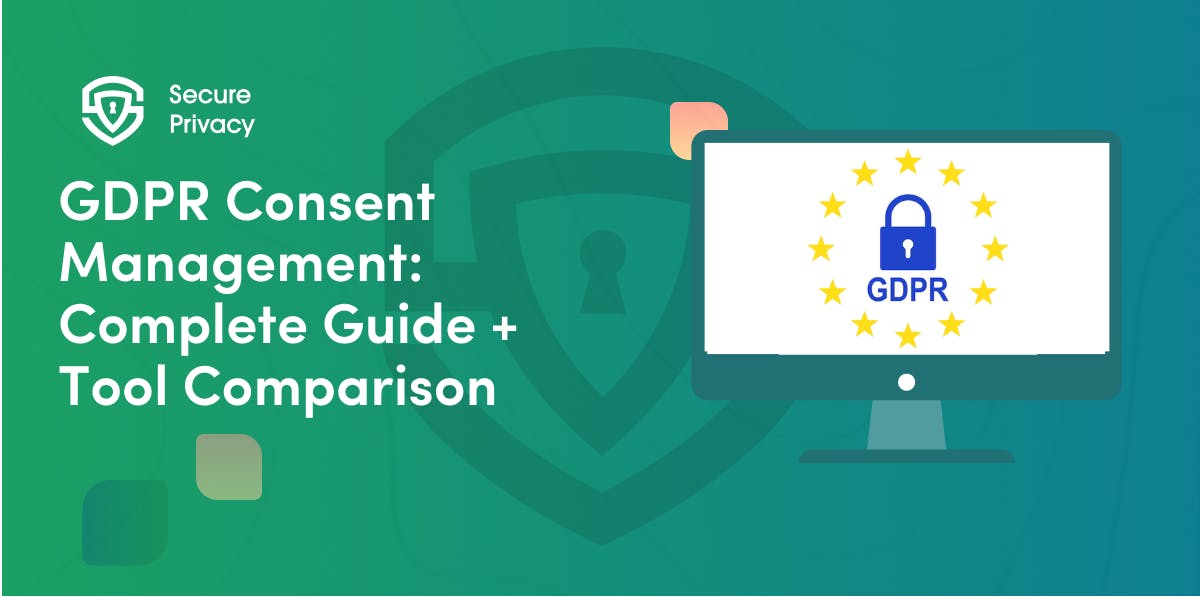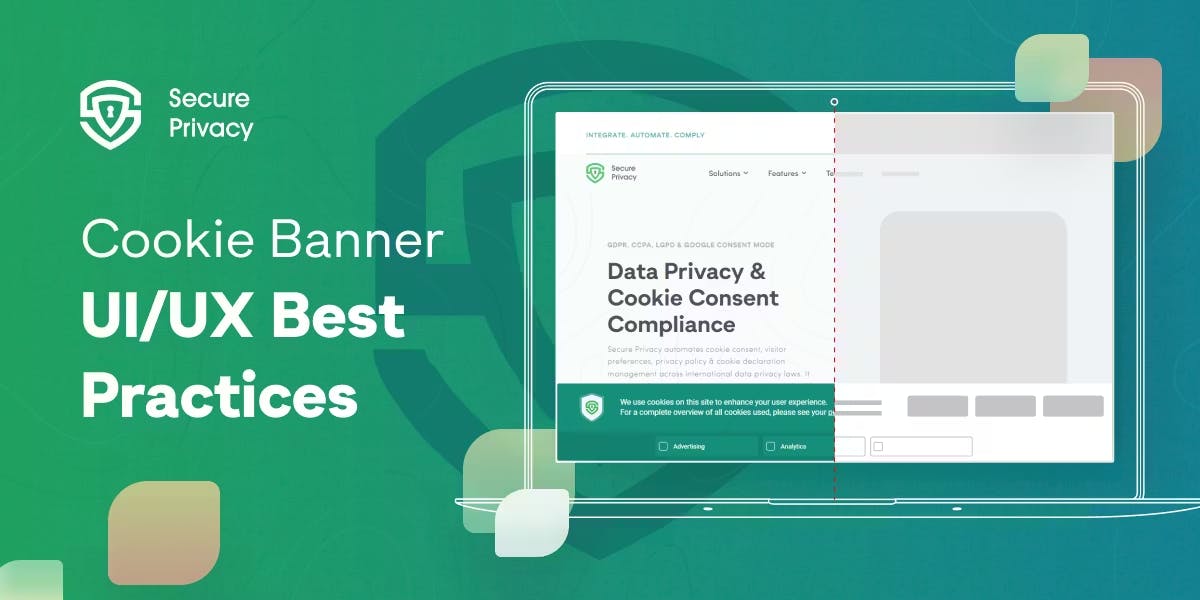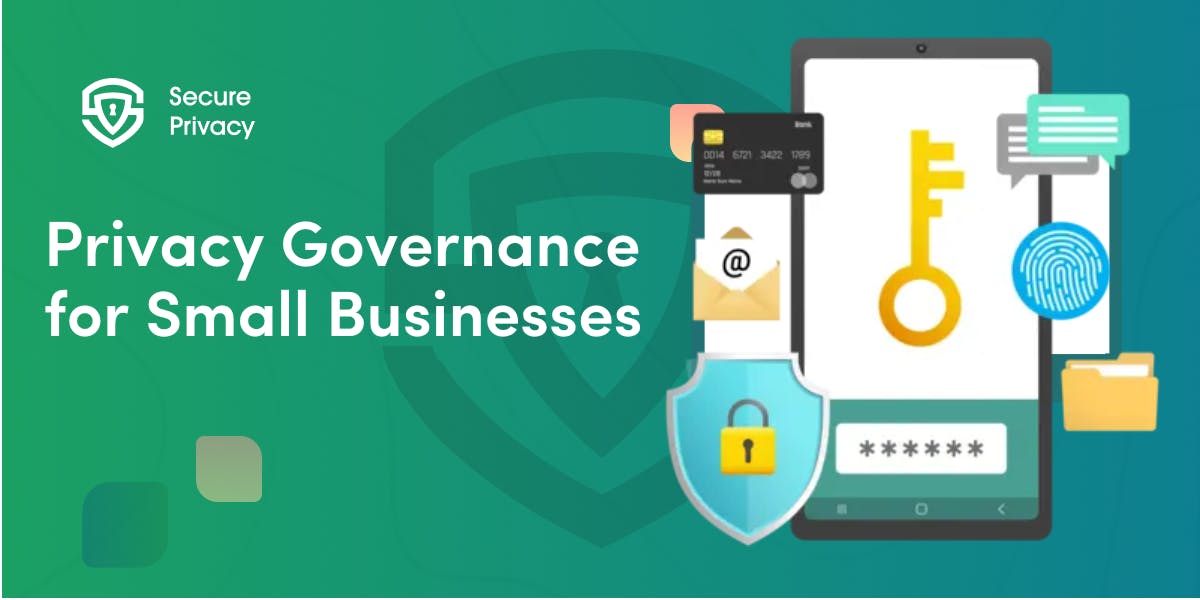Post-Quantum Cryptography and Consent Management: Securing Tomorrow's Data Today
With quantum computing making strides, the intersection of post-quantum cryptography (PQC) and consent management has become a critical focal point for organizations handling sensitive user data. With the UK's NCSC mandating full PQC migration by 2035 and quantum decryption threats accelerating, consent frameworks now face unprecedented risks—and opportunities.
Are your consent management systems prepared for the quantum revolution? While many organizations focus on immediate compliance concerns, forward-thinking leaders recognize that quantum computing threats require a fundamental reassessment of how we protect consent data for the long term.
The Quantum Threat to Consent Data
The risks to consent data in a quantum computing environment are both immediate and severe, creating urgency for protective measures even before quantum computers reach full maturity.
"Harvest Now, Decrypt Later" Attacks
Today's adversaries aren't waiting for quantum computers to mature. They're already collecting encrypted consent records—including GDPR/CCPA opt-ins and biometric consents—with plans to decrypt them once quantum computing capabilities become available. This strategy creates a ticking time bomb of privacy risk.
The potential impact of these attacks is substantial. Breached consent data could expose entire user histories, enabling identity theft, discrimination, and triggering regulatory penalties. Recent cases like Blackbaud's $6.75M fine demonstrate the severe consequences of compromised consent information.
According to NIST predictions, quantum computers could break RSA-2048 encryption by 2029, with full decryption capabilities expected by 2034 (Gartner, 2025). This timeline creates urgency for organizations to implement quantum-resistant protections now, not when the threat becomes imminent.
Vulnerable Systems
Several critical components of modern consent infrastructures are particularly vulnerable to quantum threats:
Consent Management Platforms (CMPs) often store extensive consent logs with traditional encryption methods like AES-256 and RSA. These legacy systems represent prime targets for harvest-now-decrypt-later attacks due to their centralized nature and valuable data.
IoT and edge devices collecting biometric and health data frequently lack quantum-safe protocols due to processing and memory constraints. Smart home systems, wearables, and other consumer devices often prioritize convenience over security, creating significant quantum vulnerability.
The widespread reliance on these vulnerable systems creates a perfect storm of risk for consent data. Without proactive intervention, organizations may find their carefully maintained consent records compromised when quantum computing reaches critical capability thresholds.
Strategies for Quantum-Resilient Consent Management
Addressing quantum threats to consent data requires a multi-faceted approach combining immediate protective measures with long-term strategic planning.
Hybrid Cryptography for Transition Periods
During the migration to fully quantum-resistant systems, hybrid approaches provide crucial protection while maintaining compatibility with existing infrastructure.
The most effective approach combines classical encryption methods like RSA with post-quantum cryptography algorithms such as Kyber and Dilithium. This dual-layer protection ensures that consent records remain secure even if one encryption method is compromised.
Google's Chrome browser demonstrates this strategy in action, using a hybrid of elliptic curve cryptography and lattice-based algorithms for TLS 1.3. This implementation has reduced decryption risks by 92% according to the ARED Group's 2025 assessment, creating a compelling case study for consent management applications.
Quantum-Safe Consent Chains
Beyond basic encryption, quantum-safe consent chains provide comprehensive protection for the entire consent lifecycle.
Implementing Covercrypt—ETSI's 2025 standard—enables attribute-based consent encryption with powerful capabilities. This approach allows for anonymous policy enforcement, where only users with specific attributes like "EU citizen" or "health data opt-in" can decrypt relevant consent records.
A key advantage of this approach is dynamic revocation, where consent withdrawals automatically invalidate quantum-encapsulated keys. This feature ensures that consent remains meaningful and enforceable in a post-quantum environment, addressing both security and regulatory concerns simultaneously.
Crypto-Agile Consent Orchestration
Given the rapidly evolving nature of quantum threats and countermeasures, building systems that can quickly adapt to changing standards is essential.
Crypto-agility—the ability to rapidly switch between encryption methods as standards evolve—should be a core design principle for consent management systems. This flexibility ensures long-term viability as quantum computing capabilities and cryptographic defenses continue to develop.
Several tools support this approach, including Fivetran's Metadata API for tracking consent data lineage across hybrid and PQC systems, and dbt Labs' Semantic Layer for managing quantum-safe consent logic in analytics pipelines. These technologies enable organizations to maintain a consistent consent management approach while updating underlying cryptographic methods.
Implementation Roadmap
Transitioning to quantum-safe consent management requires a phased approach that balances immediate risks against implementation complexity.
Phase 1: Risk Assessment (2025–2026)
The first step is conducting thorough quantum risk audits using established frameworks like IBM's Quantum-Safe Program Methodology. This assessment should identify high-risk consent data with long-term confidentiality requirements, particularly biometrics and health records that typically require protection for more than five years.
Organizations should also map third-party dependencies, especially cloud CMP vendors, evaluating their PQC readiness. This external assessment is crucial since consent data often flows through multiple systems with varying security standards.
The output of this phase should be a prioritized list of consent systems requiring quantum protection, with timelines aligned to both risk levels and operational constraints.
Phase 2: Pilot Migration (2027–2029)
With risks properly assessed, organizations should implement targeted migrations for high-priority systems. Consent logs containing audit trails should be migrated to NIST-standardized PQC algorithms like CRYSTALS-Kyber to ensure long-term integrity of compliance evidence.
IoT edge nodes present another priority area, requiring lattice-based encryption for real-time consent collection in smart devices. These endpoints often represent the most vulnerable parts of consent collection infrastructure due to their distributed nature and physical accessibility.
Singapore's CSA guidelines have already helped organizations like DBS Bank secure over 12 million consent records using hybrid PQC ahead of 2030 deadlines, demonstrating that early adoption is both possible and beneficial.
Phase 3: Full Transition (2030–2035)
The final implementation phase aims to replace all legacy systems with quantum-safe alternatives, creating comprehensive protection across the consent management ecosystem.
This phase presents significant challenges, particularly around interoperability. Ensuring PQC-compliant Consent Management Platforms integrate seamlessly with legacy databases requires careful planning and vendor coordination. Many organizations will need to maintain hybrid systems during this period to accommodate vendors with different transition timelines.
Compliance alignment presents another challenge, as regulations continue to evolve in response to quantum threats. The EU's draft 2030 Quantum Resilience Act, for example, introduces new requirements that organizations must incorporate into their transition plans, potentially accelerating timelines for European operations.
Despite these challenges, organizations that begin planning now will find this transition manageable, while those that delay may face impossible timelines as quantum threats materialize and regulatory pressure intensifies.
Governance & Ethical Considerations
Technical measures alone aren't sufficient—organizations must also establish robust governance frameworks to ensure quantum-safe consent management is implemented responsibly and ethically.
Consent Provenance Tracking
Maintaining immutable records of consent lifecycle events—including collection, modification, and revocation—becomes even more critical in a post-quantum environment. Quantum-safe blockchain ledgers provide a compelling solution, creating tamper-proof audit trails that will remain secure even as quantum computing advances.
IBM's Cryptographic Observability Platform addresses this need by generating real-time Crypto Bills of Materials (CBOMs) for audits. These comprehensive inventories document all cryptographic components in consent systems, providing transparency for both internal governance and regulatory oversight.
Post-Quantum Transparency
Beyond technical implementation, organizations should embrace transparency in communicating quantum protections to consumers. Including clear disclosures in privacy policies—such as "Your consent records are secured with quantum-resistant encryption"—builds trust while differentiating privacy-conscious brands.
This transparency creates tangible business value: research from PrivacyTrust (2025) indicates that 78% of consumers prefer brands that communicate quantum safeguards. This preference translates directly to customer acquisition and retention advantages for transparent organizations.
Ethical AI Integration
As consent management systems incorporate increasingly sophisticated analytics, quantum machine learning models analyzing consent patterns must be designed to avoid bias amplification. The complexity of quantum algorithms can make bias detection more challenging, requiring specialized oversight.
The most responsible approach involves adopting IEEE FairData-certified AI systems that audit consent algorithms for fairness. These certifications ensure that quantum-enhanced AI doesn't inadvertently discriminate or manipulate vulnerable users through consent interfaces.
Future Outlook
Several emerging trends will shape the evolution of quantum-safe consent management over the coming decade:
Quantum Key Distribution (QKD) represents a promising frontier for ultra-secure consent data transfers via fiber networks. Deutsche Telekom's 2026 trials demonstrate how this technology can create theoretically unhackable channels for transmitting sensitive consent information, potentially eliminating entire categories of quantum threats.
Neuromorphic encryption offers another innovative approach, using brain-inspired chips that process consent data without exposing raw information. DARPA's groundbreaking project (expected 2028) suggests that neuromorphic approaches may eventually surpass traditional quantum-resistant algorithms for certain consent applications.
Global PQC standardization efforts continue to advance, with the W3C's 2027 Quantum Consent Framework expected to harmonize requirements across GDPR, CCPA, and DPDPA jurisdictions. This standardization will simplify compliance for global organizations while establishing minimum security thresholds for consent systems worldwide.
Key Takeaways for Your Organization
As you consider your organization's approach to quantum-safe consent management, several imperatives stand out:
First, act now on high-risk consent data. Begin hybrid encryption pilots for your most sensitive information, particularly biometrics and health data that require long-term protection. Early implementation allows for methodical transition rather than crisis response.
Second, demand crypto-agility from your vendors. Update your service level agreements to require support for NIST PQC standards, ensuring your technology partners won't become security liabilities as quantum threats materialize.
Third, recognize the opportunity to rebuild consumer trust. Position your quantum safeguards as a marketing differentiator, acknowledging that 83% of consumers prioritize brands with verifiable PQC practices. This approach transforms security investment into competitive advantage.
The quantum era demands a fundamental shift in perspective: consent management is no longer just about compliance—it's about cryptographic survival. Organizations implementing these strategies by 2026 will establish leadership positions, while those delaying action risk catastrophic breaches and regulatory obsolescence as quantum computing matures.
The current state of preparation is sobering: only 13% of enterprises have begun PQC migrations for consent systems, leaving an estimated $9.2 billion in global data assets exposed (Deloitte, 2025). This gap creates both risk and opportunity—organizations that act decisively now will secure their consent foundations while competitors remain vulnerable.
By implementing a phased, comprehensive approach to quantum-safe consent management, you position your organization not just for security and compliance, but for sustainable competitive advantage in an increasingly quantum-enabled world.
Get Started For Free with the
#1 Cookie Consent Platform.
No credit card required

GDPR Consent Management: Complete Guide + Tool Comparison
Your website could be costing you €20 million. Every cookie that loads before user consent, every "accept all" button without an equally prominent reject option — these aren't minor oversights. They're violations that data protection authorities are actively hunting.
- Legal & News
- Data Protection

How to Design High-Performing Cookie Banners in 2026
“You're one click away from a €325 million fine”. That's what Google learned in September 2025 when French regulators hit them for cookie consent violations. The message is clear: cookie banner design in 2026 isn't about getting extra clicks anymore — it's about survival.
- Legal & News
- Data Protection

Privacy Governance for Small Businesses: Step-by-Step Guide
You're a 20-person company. A customer asks for their data. Your marketing team just added a new tracking pixel. Your CRM vendor updated their terms. And you just realized you might need to comply with GDPR, CCPA, or both.
- Legal & News
- Data Protection

